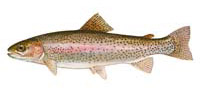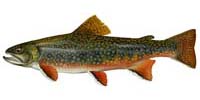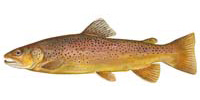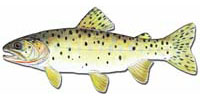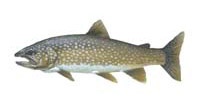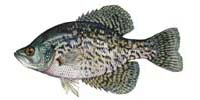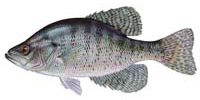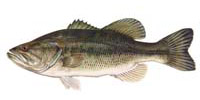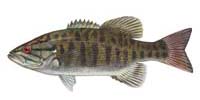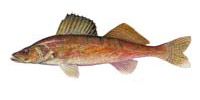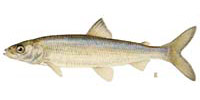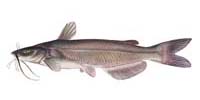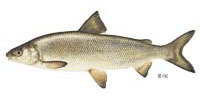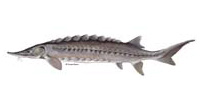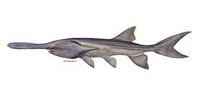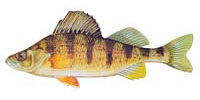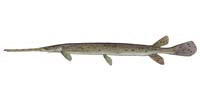For a large variety of fish, head to the Missouri River. Here, you can catch browns, rainbows, lake trout, cutthroats, Chinook salmon, black and white crappie, large and smallmouth bass, channel catfish, burbot, lake and mountain whitefish, carp, northern pike, walleye, sturgeon, paddlefish, yellow perch, and gar – just to name a few. With so many options, you never know what you’ll catch.There are three sections of the Missouri River. The first section is from the headwaters to the Holter Dam. You’ll find a decent number of average-sized trout here, but it isn’t the best fishing spot on the river. The second section runs from Holter Dam to Cascade. This area is where you’ll find the best year-round trout fishing. The third section runs from Cascade to the border of North Dakota. Warmwater species are more prevalent in this section due to the warmer, calmer waters.
A short stretch of the Missouri River between Hauser Dam and Upper Holter Lake, nicknamed “Land of the Giants,” is famous for trophy trout fly-fishing. Rainbow and brown trout here average 19-22 inches with larger trout catches common. The best times to fish Land of the Giants are April through June and September through November.
The Missouri River is known as the best river in Montana for targeting trophy-sized trout with dry flies. Large pods of trout follow the thick hatches of mayflies, caddisflies, midges and stone flies. April through November are the best fishing months with peak season in May, June and early July; however, the Missouri River provides year round fishing opportunities.
At its headwaters, Missouri River is a classic freestone river. The headwaters offers good fly fishing for trophy trout during spring and fall. Mid-summer carp fly fishing is also excellent along this stretch of the Missouri River.
From Three Forks to Canyon Ferry Reservoir, trout fishing is spotty and top water fishing is limited because of the murky water. Anglers should use streamers and nymphs. Large streamers on heavy tackle, pulled along the bottom in deeper areas, are recommended. During the fall, wet fly attractors work well for targeting spawning Brown trout when fished over deep waters.
In the short stretch from Hauser Dam to Holter Lake, the Missouri river is wide and has a fast current. This stretch of the Missouri is shallow enough that floating is unpopular. It does, however, provide excellent opportunities for waders to catch rainbow trout that are found along this stretch. Fish below Hauser Dam, using large streamers on heavily-weighted sinking lines. The fast current and water depth make it more difficult to get these large streamers down deep, but doing so gives you a good chance to catch a 3-5 pound rainbow trout. Using dry flies in the summer months during the caddis hatch is also effective for targeting trout.
The section from Holter Dam to Pelican fishing access site has the highest fishing pressure, with large numbers of rafts, drift boats and waders causing congestion, so the trout are picky eaters. Delicate presentations of precise fly imitations are needed to catch these trout. The size and depth of the river here limits waders’ ability to reach some of the better fishing locations.
In spring, the Blue Winged Olive hatches begin in late April and extend through June. We recommend using Parachute Adams or Baetis Parachute for top water fishing, or Bead Head Hare’s Ear for sub-surface fishing during these hatches.
During early the summer, from June through August, Pale Morning Dun is the prime hatch. Effective top water patterns during this hatch include Parachute PMD, PMD Cripple, and Sparkle Dun. Popular nymph patterns are the Hare’s Ear and Pheasant Tail. Fly-fishing the Pale Morning Dun hatch requires precise presentation. Drag-free floats, quiet approaches and perfect casting are required to catch finicky trout.
From late July through the remainder of summer, hopper fishing is excellent. Fish Joe’s Hopper, Dave’s Hopper or Henry’s Fork Hopper along the banks. In the Fall, Pale Morning Dun hatches resume from early September through mid-October. Winter fishing is cold and windy here, but anglers willing to brave the temperatures will have good luck with small dry flies like the Griffiths Gnat and fishing sub-surface with small emerger patterns like the Midge Pupa.
From Pelican access site to Great Falls, the water warms and the current slows. There is not much fishing pressure in this area compared to other sections of the Missouri River. Large brown trout hold to deeper holes and undercut banks in this area. The popular fly-fishing method here is streamers on sink tip lines cast into the holes and undercut banks, during spring and fall. Summer heat seriously limits trout fishing from Pelican access site to Great Falls. Other fish species found in this area include smallmouth bass and carp. To target smallmouth, try dragging crayfish on a sink tip line along the bottom of the river.
Missouri River Fish:
Missouri River boat ramps:
The following boat ramps provide access to Missouri River.


